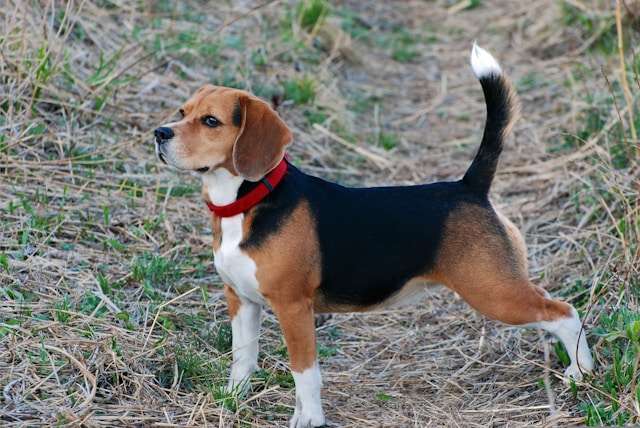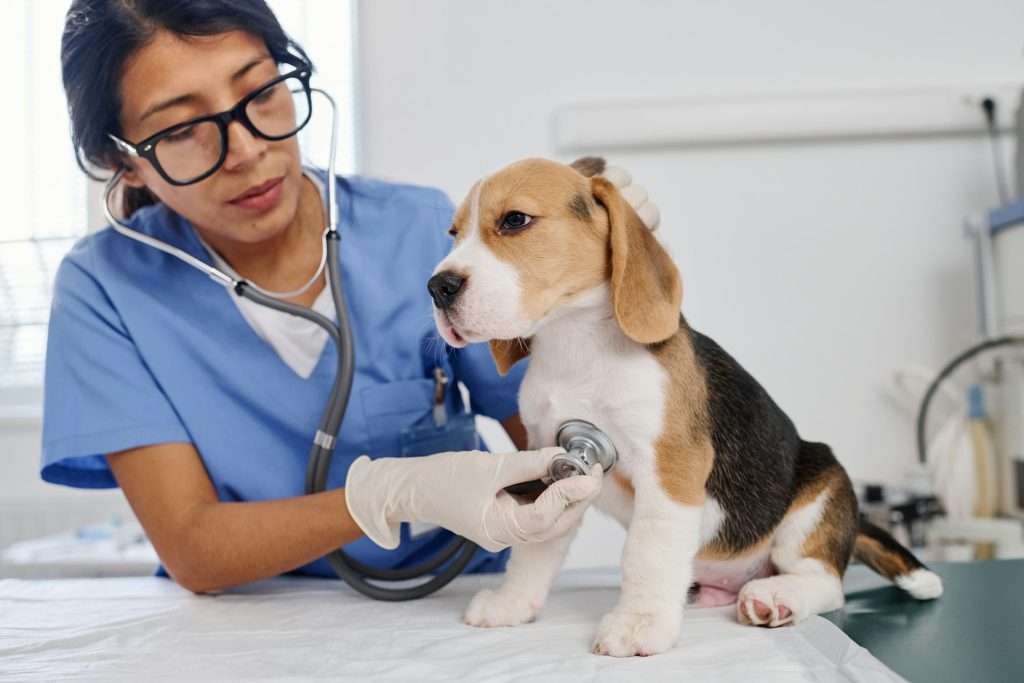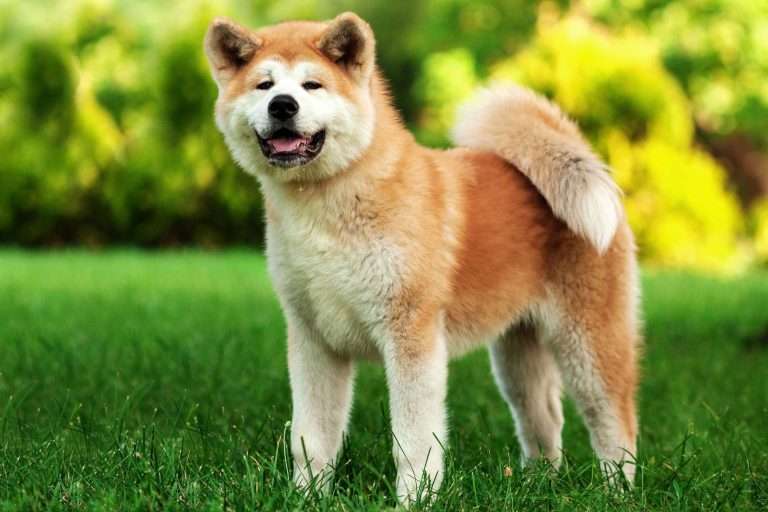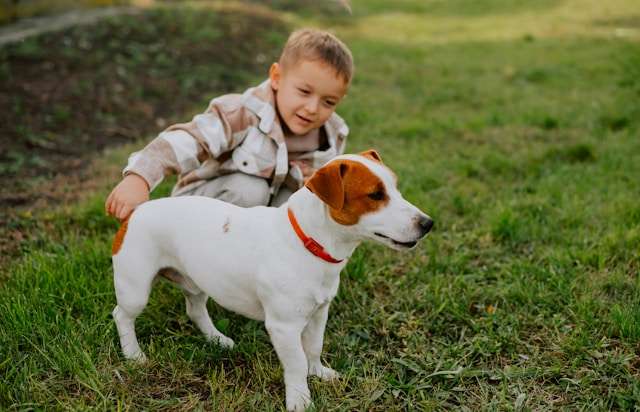Best Dog Food for Hound Dogs: Top Picks and Expert Tips

Best Dog Food for Hound Dogs: Hound dogs are unique from the inside out, with their distinctive features and boundless energy. But behind those floppy ears and wagging tails lies a set of nutritional needs that demands special attention. Choosing the right food for your hound isn’t just about filling their bowl—it’s about supporting their health, stamina, and overall happiness.
The best dog food makes all the difference, from proteins to ensure muscle strength to nutrients that keep them agile. For more on meeting their dietary requirements, check out our insights on how Basset Hounds thrive as pets.
Table of Contents
Understanding Hound Dogs and Their Dietary Requirements
Hound dogs are a fascinating group of canines known for their acute senses and incredible stamina. With origins rooted in hunting, their dietary needs reflect their active and alert nature. Feeding a hound dog isn’t just about satisfying hunger—it’s about fueling their bodies for daily adventures.
Common Hound Dog Breeds
The hound group includes a variety of breeds, each with distinct traits and quirks. Here’s a quick overview of some popular hound breeds:
Basset Hounds
Basset Hounds are the kings of sniffing. Known for their droopy ears and incredible sense of smell, these dogs are scent hounds through and through. Their calm demeanor makes them great family companions. Learn more about their unique traits in our 10 Surprising Facts About Basset Hounds post.Beagles
These friendly, energetic dogs are also scent hounds, revered for their tracking abilities. Beagles are highly social and thrive in active households. Curious about their history and personality? Check out 10 Fascinating Facts About Beagles.Greyhounds
As one of the fastest dog breeds, Greyhounds are built for speed. Despite their athletic prowess, they’re surprisingly low-energy at home, making them perfect for quieter families. Their lean bodies require a high-quality diet to maintain optimal health.
Each hound breed brings something unique to the table, but what connects them is the care they need through nutrition.
Nutritional Needs of Hound Dogs
Every hound has unique energy requirements, but their dietary needs are similar. Understanding these essentials helps you choose the best food for them.
Protein
Hound dogs are active creatures, so they need plenty of protein to sustain muscle development and repair. Aim for high-quality sources like chicken, beef, or fish. Refer to trusted sources like this dog nutrition guide on the AKC website for detailed protein guidelines.- Fats
Think of fats as a hound dog’s energy reserve. Healthy fats, such as omega-3 and omega-6 fatty acids, are critical forskin, coat, and overall vitality. They also help fuel their boundless enthusiasm.
Carbohydrates
While they’re not carnivores by definition, carbohydrates provide a quick energy boost, especially for active hounds. Whole grains and veggies are excellent options.Vitamins and Minerals
Like humans, hound dogs need a mix of vitamins and minerals for immunity and optimal organ function. Calcium and phosphorus, for example, are crucial for bone strength—especially for larger breeds like the Irish Wolfhound. Curious about Irish Wolfhounds? Explore more in this resource on Irish Wolfhound highlights.
To give your hound the best, prioritize balance and quality in their diet. If you’re unsure how to tailor your meals, this Basset Hound diet guide provides practical advice for hound owners.
Hound dogs are more than their lovable personalities—they’re high-performing companions with unique dietary needs. What you feed them daily directly impacts their strength, focus, and happiness. Why settle for less when the right food can make a difference?
Top Dog Foods for Hound Dogs
Choosing the perfect food for your hound dog isn’t just a task—it’s a mission to keep your pup healthy, happy, and energetic. With so many brands and options to pick from, the choices can feel overwhelming. Lucky for you, we’ve broken it down, exploring high-quality store-bought brands, grain options, and even homemade recipes.
Brand Reviews
Here are some standout brands that are a hit among hound dog owners:
- Orijen
Known for its biologically appropriate formulas, Orijen is packed with premium animal proteins. This brand uses free-run chicken, wild-caught fish, and fresh vegetables. It’s especially great for active hound breeds like Beagles or Greyhounds that burn calories quickly. Their Six Fish Recipe is exceptionally nutrient-dense. - Diamond Naturals
Diamond Naturals is worth a shot if you’re looking for value without compromising quality. It offers formulas with antioxidants, probiotics, and Omega fatty acids, perfect for maintaining a hound’s shiny coat and robust immunity. Their Lamb Meal & Rice formula is gentle on sensitive stomachs. Blue Buffalo
Blue Buffalo’s Life Protection line is tailored for all life stages. It’s loaded with real meat, veggies, and their exclusive LifeSource Bits—a blend of nutrients and antioxidants that support a hound’s active lifestyle. Plus, with no artificial fillers, it’s a safe and wholesome option. Learn more about high-quality dog food options here.
Grain-Free vs. Grain-Inclusive Options
The debate between grain-free and grain-inclusive dog food can feel confusing. What’s best for your hound?
Grain-Free
Grain-free dog food often replaces traditional grains with alternatives like sweet potatoes or lentils. These are ideal if your hound has allergies or sensitivities to grains—brands like Orijen and Taste of the Wild excel in this category. However, recent studies suggest a potential link between grain-free diets and heart conditions in dogs, so consult with your vet.Grain-Inclusive
Some hounds thrive on grain-inclusive diets that provide whole grains like brown rice or oatmeal. These carbs are a quick source of energy for active breeds. Diamond Naturals’ formulas, for example, include healthy grains that are easy to digest and packed with nutrients.
When choosing between the two, focus on your dog’s unique needs. Always watch for signs of allergies or stomach upset. A detailed guide on grain-free vs. grain-inclusive diets is also available on Hound Family.
Homemade Dog Food Recipes
If you want complete control over your hound’s diet, homemade meals are an excellent option. Here are two easy, healthy recipes to try out:
Recipe #1: Chicken and Rice Delight
- 1 cup cooked chicken (shredded, skin removed)
- 1/2 cup brown rice
- 1/4 cup chopped carrots
- 1/4 cup peas
- Drizzle of olive oil for healthy fats
Mix all ingredients thoroughly. Serve at room temperature.
Recipe #2: Beef and Sweet Potato Stew
- 1 cup ground beef (lean)
- 1/2 cup mashed sweet potatoes
- 1/4 cup spinach (steamed)
- 1/4 cup plain yogurt
Combine ingredients and serve warm. Store leftovers in an airtight container for up to 3 days.
Homemade meals are cost-effective and let you tailor your dog’s diet to their exact requirements. But balance is key! Always ensure meals include protein, carbs, and fats.
By understanding and meeting your hound’s nutritional requirements, you can help them thrive in every aspect of their life. Stay tuned for more key insights and recommendations!

Photo by Maximiliano I. Pinilla A.
Feeding Guidelines for Hound Dogs
Feeding hound dogs can feel like a balancing act. With their varying energy levels, sizes, and unique traits, ensuring every meal fits their needs is essential. Whether you have a slender Greyhound or an energetic Beagle, understanding portion sizes and feeding frequency is key to keeping them healthy and happy.
Determining Portion Sizes
The right portion size for your hound dog depends on factors like breed, size, age, and activity level. A Greyhound’s athletic build won’t require the same portion as a more relaxed Basset Hound. Here’s how to figure it out:
Base It on Weight
For a baseline, feed your hound approximately 1 – 1.5 cups of dry food per 10 pounds of body weight daily. Active dogs might need more, while seniors may require less.Check the Food Label
Quality dog food brands include portion recommendations based on weight and activity. These guidelines are a great starting point.Monitor Body Condition
Feel your dog’s ribs—if they’re hard to detect, your pup might be overeating. If ribs are too visible, they might need more food.
Not all hound breeds can be treated the same in terms of diet. For a deeper dive into feeding practices, this dog feeding chart offers helpful insights tailored to different sizes and energy levels.
Feeding Frequency for Hound Dogs
How often you feed your hound matters almost as much as what you feed them. Their age and activity level are the most significant deciding factors:
Puppies
Puppies are growing fast and need more frequent meals. Feed them 3–4 smaller meals daily to stabilize their energy levels.Adults
Adult hounds typically do best with two meals daily: one in the morning and one in the evening. This routine prevents overeating and helps manage their high metabolism.Seniors
As hounds age, their energy demands drop. Stick to two meals daily with smaller portions to avoid unnecessary weight gain.
Regular feeding routines can improve your hound’s digestion and overall mood. For more tips on establishing the right meal rhythm, here’s a simple guide on how much you should feed your dog.
Feeding flexibility is also crucial; adjust based on your dog’s activity, health, or life stage changes. Remember, no two hound dogs are alike—customizing their diet is part of the fun of owning such a unique pet!
Common Health Issues in Hound Dogs
Hound dogs are generally robust and well-adapted, but like any breed, they are prone to specific health challenges. Addressing these issues often starts with a well-balanced diet tailored to their needs. Let’s dive into two primary concerns: obesity and joint health.
Obesity and Hound Dogs

Photo by Mikhail Nilov
Hound dogs tend to have hearty appetites, and their love for food can easily lead to obesity if not managed carefully. Overweight hounds face higher stress risks on bones and joints, not to mention a shorter lifespan.
Why Does Obesity Happen?
Some hounds, like Basset Hounds and Beagles, live relatively sedentary lives despite their history as working dogs. Combine reduced activity with overfeeding, and the pounds can quickly pile on. Treats thrown in here and there? Even small indulgences can make a big difference over time.
Managing Weight
Here’s how you can control your hound’s weight:
- Measure Portions: Follow the guidelines on your dog food packaging based on weight and activity level. For tips, visit Hound Health Information.
- Choose Low-Calorie Treats: Avoid calorie-dense options and look for healthy snacks such as baby carrots or green beans.
- Promote Exercise: Even a 20-minute walk can work wonders for hounds prone to laziness.
- High-Protein Diets: Protein-packed meals will keep your dog full and energized without unnecessary calories.
For more insights on breed-related care, visit our helpful guide on dog breeds and their health challenges.
Joint Health and Nutrition
Joint issues, including hip and elbow dysplasia, are common in larger hounds like Bloodhounds or Otterhounds. These problems can make movement painful and drastically impact their quality of life as they age.
Preventative Nutrition
Certain nutrients actively support joint health and reduce inflammation. Here’s what to focus on:
- Glucosamine & Chondroitin: Known for their ability to maintain joint cartilage, these are often found in premium dog foods or as supplements.
- Omega-3 Fatty Acids: Ingredients like fish oil or flaxseeds can ease stiffness and improve mobility.
- Calcium & Phosphorus: Important for bone health, especially in growing hounds.
Best Food Choices for Joint Health
Foods specifically designed for joint support can make a huge difference. Brands like Blue Buffalo’s Life Protection Formula often include these joint-friendly ingredients. If your hound already has joint pain, consult with your vet before making any dietary changes.
Check out 11 Common Health Problems in Basset Hounds for more specific guidance on breed-specific health conditions.
Understanding and addressing obesity and joint concerns is crucial to ensuring your hound stays happy and active. By making targeted choices in their diet, you can help prevent many of these issues proactively.
Conclusion and Final Recommendations
Making the right nutritional choices for hound dogs means paying close attention to their needs. From their high-energy requirements to breed-specific dietary sensitivities, hounds thrive on balanced meals tailored just for them. By now, you know what factors to consider in ensuring your hound stays healthy and vibrant.
Key Takeaways for Choosing the Best Dog Food
Let’s quickly sum up the essentials:
- Prioritize High-Quality Proteins: Active hounds need strong muscles and energy, so opt for foods that list real meat, like chicken or fish, as their primary ingredient.
- Look for Nutrient-Dense Ingredients: Omega fatty acids, whole grains, and vitamins are essential for their coat, stamina, and overall health.
- Understand Your Dog’s Life Stage: Adjust their diet as they grow, from energetic pups to slower senior years, keeping their portion sizes in check.
Want more ideas tailored to hound dogs? Check out Hound Family’s guide to the best dog food for specific product suggestions.
Tips for Long-Term Diet Success
To ensure your hound gets the best from their diet:
- Rotate Proteins: Change their protein source occasionally to prevent boredom and nutritional gaps.
- Avoid Overfeeding: Treats are great, but remember that moderation keeps long-term weight concerns in check. Too many bites of indulgence can lead to obesity, which is hard on their joints.
- Consult Your Vet: Specific health concerns like allergies or joint issues might require specialized food.
Need help tracking your dog’s diet success? Explore tips on aligning food choices with breed requirements at Dog Breeds and Photos blog.

Photo by MART PRODUCTION
By taking these steps, you’re not just feeding your hound but fueling their adventures, joy, and every playful wag. Start today and see the change. For more trusted feeding advice and resources, visit our leading Dog Food Blog.
FAQ: Answering Common Questions About Feeding Hound Dogs
Feeding hound dogs can raise many questions, especially for new dog owners. Here are answers to some of the most frequently asked questions to help you make informed decisions.
What types of food are best for hound dogs?
Hound dogs typically thrive on high-protein diets with balanced carbs and healthy fats. Look for premium options that list real meat as the first ingredient, such as chicken, beef, or fish. Avoid products with low-quality fillers like corn and soy. For more insights, check out how to choose the best dog food.
Should I feed my hound dog grain-free food?
Grain-free food can benefit hounds with grain allergies or sensitive stomachs. However, unless your dog has a known issue, grain-inclusive options with whole grains like rice or oatmeal are perfectly healthy. If you’re unsure, read this detailed FAQ on hound-specific diets.
How many times should I feed my hound each day?
Adult hounds do best with two meals daily—one in the morning and one in the evening. Puppies need more frequent meals, typically 3-4 times a day. Seniors might require smaller, more frequent portions to aid digestion and prevent overeating.
Are there specific foods to avoid?
Yes, avoid foods with artificial additives, flavors, or sweeteners. Toxic ingredients like chocolate, grapes, onions, and garlic should stay out of their diet. If you’re considering raw feeding, check out this user discussion on feeding raw diets to hound dogs.

Photo by cottonbro studio
How can I tell if my hound dog has food allergies?
Signs of food allergies include excessive itching, skin irritation, and gastrointestinal issues like vomiting or diarrhea. If you notice these symptoms, switch to a limited-ingredient diet and consult your vet. Review this Basset-specific diet guide to understand common sensitivities in hounds at Basset Net Forums.
Should I consult a vet before changing my hound’s diet?
Absolutely. Vets can recommend food tailored to your dog’s age, weight, activity level, and health needs. Whether it’s for weight management or joint-specific nutrition, professional advice makes all the difference. For practical tips, visit our content on how to care for different dog breeds.
Keep your hound nourished and happy by focusing on their unique needs. With the right food and care, they’ll be ready for all the adventures life has to offer!
Conclusion
Hound dogs deserve a diet that meets their active, alert, and unique needs. Offering them high-quality, protein-rich food with balanced nutrients ensures they stay healthy, happy, and energetic.
Whether you choose premium brands, grain-inclusive options, or homemade meals, every choice matters. Regular vet consultations and observing your dog’s reactions to food can help you refine their diet over time.
For further recommendations, explore Dog Breeds And Photos for additional insights on caring for active and energetic dogs. A balanced diet is not just fuel—it’s a cornerstone of their well-being and vitality.






